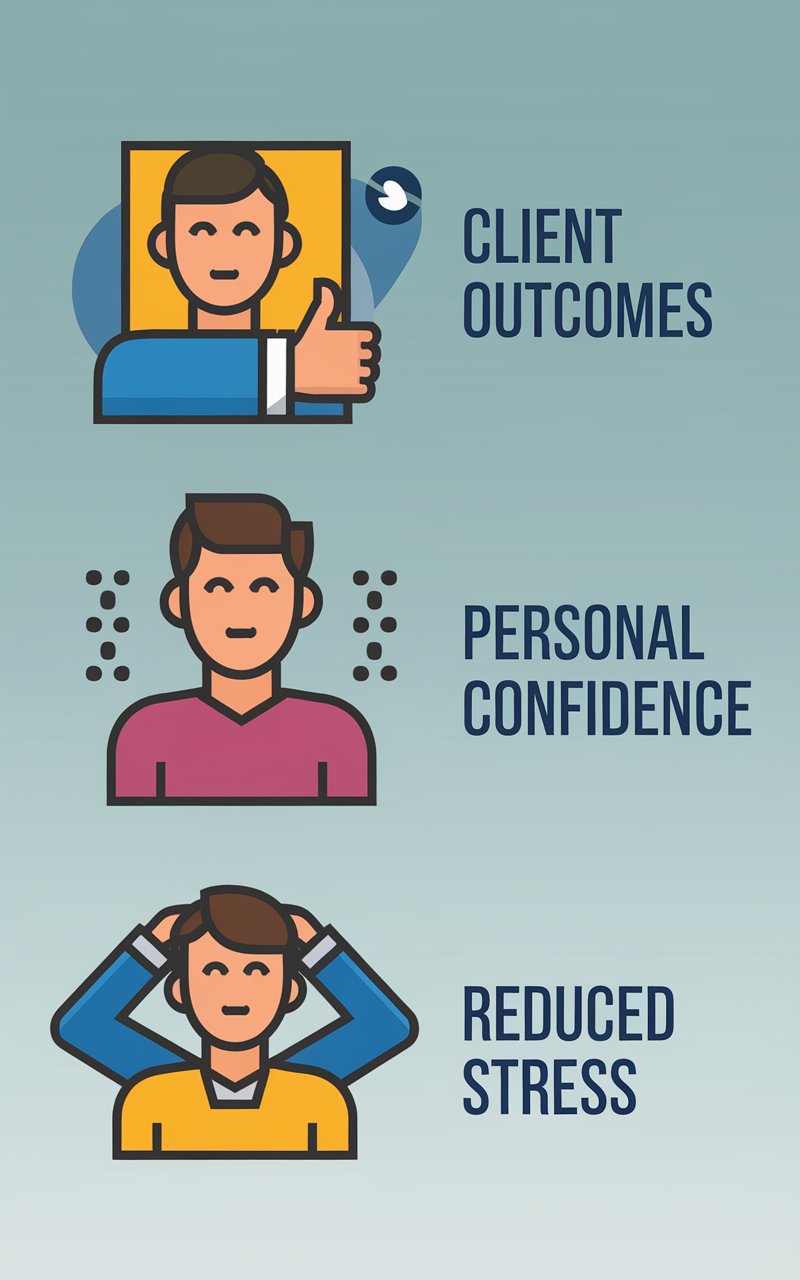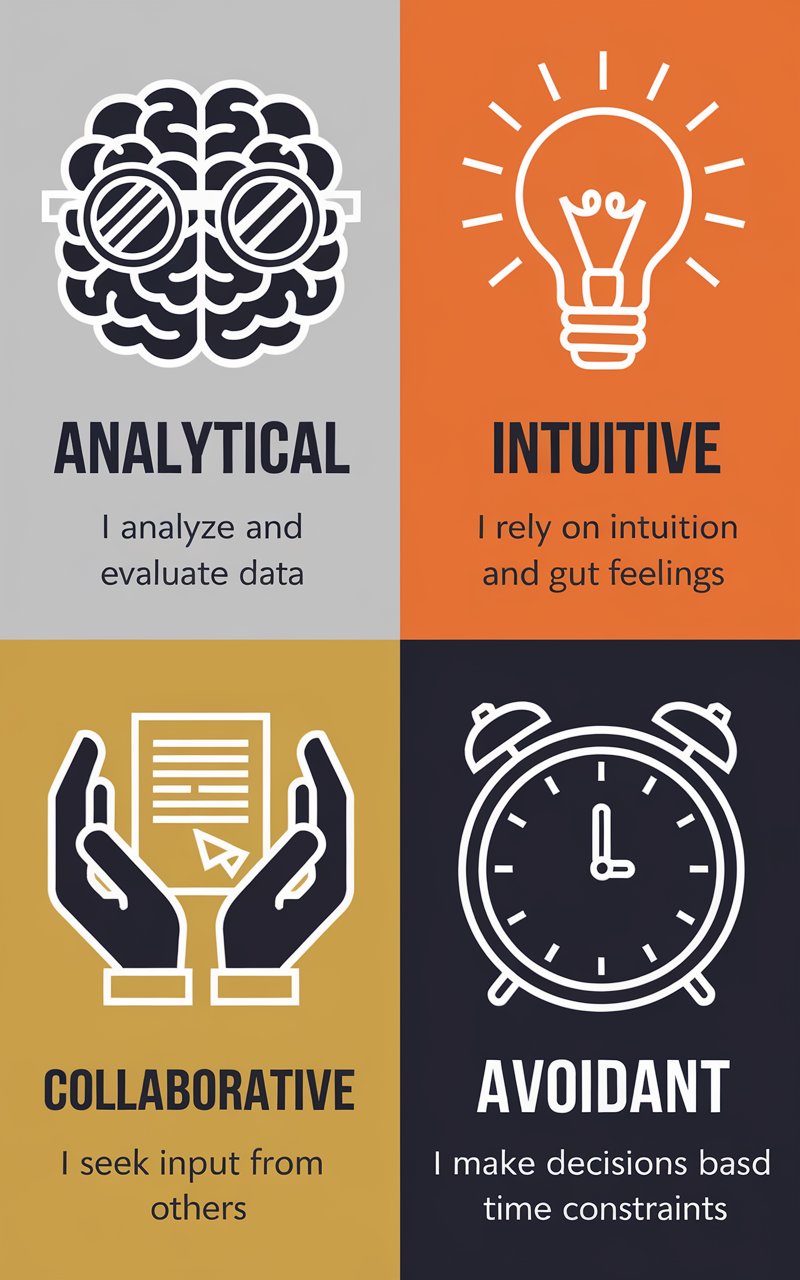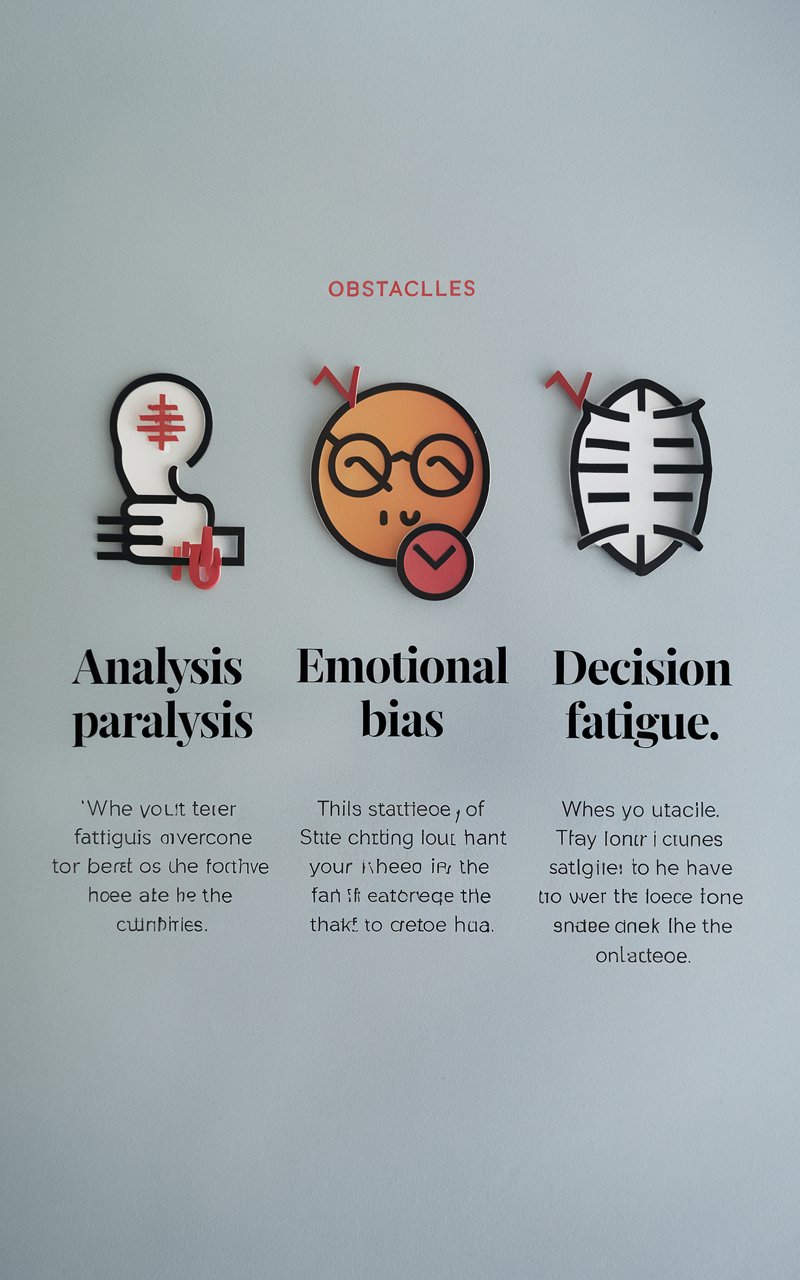Every day, we face a series of decisions—big and small—that shape our lives and work. For coaches, consultants, and healers, the quality of these decisions can directly impact clients, business success, and personal well-being. Yet, decision-making isn’t always easy. It can feel overwhelming, especially when the stakes are high, emotions are involved, or options seem endless.
But here’s the good news: decision-making is a skill, and like any skill, it can be improved. By understanding the process, identifying personal patterns, and using structured techniques, you can make choices that are confident, clear, and aligned with your values.
In this article, you’ll learn:
- How to identify and overcome common decision-making obstacles.
- Techniques to analyze options and make more informed choices.
- Tips to stay confident and aligned with your values in every decision.
For a list of 50+ journal prompts to help you reflect on your decision-making process, check out our Decision-Making Journal Prompts.
Table of Contents
Understanding the Importance of Effective Decision-Making
Making sound decisions is at the heart of success, whether in your personal growth, client interactions, or business strategies. The choices you make affect not only your own life but also the lives of those you serve. So, developing an effective decision-making process is essential for reducing stress, staying focused, and leading with intention.
Why Decision-Making is Crucial for Coaches, Consultants, and Healers
In fields where you’re responsible for guiding others, your decisions can have a ripple effect. A clear, thoughtful decision-making process allows you to:
- Enhance client outcomes: When you make decisions that align with your expertise and values, you can provide more effective support and create positive results for your clients.
- Boost personal confidence: Good decision-making is empowering. Knowing that your choices are intentional and well-considered builds self-assurance, which strengthens your ability to lead.
- Reduce stress and mental fatigue: A consistent process helps eliminate the overwhelm of decision-making, allowing you to approach each choice with calmness and clarity.
Research indicates that structured decision-making reduces stress by providing clarity and reducing emotional exhaustion, especially for those in high-stakes or client-facing roles【29†source】.

Identifying Your Decision-Making Style
One key to making better decisions is understanding how you naturally make them. We each have unique decision-making styles that shape our approach. Some of us rely on facts and logic, while others go with their gut or seek input from others.
When you know your style, you can work with it—rather than against it—to make choices that feel aligned and authentic.
Overview of Decision-Making Styles
Here’s a look at four common decision-making styles, each with its strengths and challenges:
-
Analytical Decision-Makers: This style focuses on facts, data, and logical reasoning. Analytical decision-makers are thorough and methodical. They excel at breaking down complex information but may struggle with “analysis paralysis” if they get too caught up in the details.
-
Intuitive Decision-Makers: Those with an intuitive style rely on their gut feelings and instincts. They’re often quick to act and trust their inner guidance. However, intuitive decision-makers might overlook important practical details if they don’t balance their intuition with logic.
-
Collaborative Decision-Makers: Collaborative decision-makers enjoy gathering input from others. They value different perspectives and seek consensus, which can be inclusive and team-oriented. On the flip side, relying on too many opinions can slow down the process when quick decisions are needed.
-
Avoidant Decision-Makers: Avoidant decision-makers tend to delay or shy away from making decisions altogether, especially when choices feel overwhelming or uncertain. While this approach can sometimes help avoid rushed decisions, it may lead to missed opportunities if not managed thoughtfully.
Discovering Your Decision-Making Style
Understanding your primary style can clarify where you thrive and where you might need to adapt.
Here are a few questions to consider:
- Do you prefer gathering as much information as possible before deciding?
- Do you trust your instincts, even if you don’t have all the facts?
- Are you comfortable making decisions on your own, or do you seek others' input?
- Do you tend to delay decisions until you feel absolutely certain?
Reflecting on these questions can help you identify your primary style. Remember, no style is “right” or “wrong”—each has strengths you can leverage and areas to refine for better balance.

Techniques to Improve Your Decision-Making Process
Once you understand your natural decision-making style, you can use specific techniques to make choices with greater clarity and confidence. Whether you're facing a small choice or a life-changing decision, these methods can bring structure and insight to your process.
Pros and Cons List
A classic but effective method, the pros and cons list helps you weigh the advantages and drawbacks of each option. This technique gives you a clear visual comparison, making it easier to see the bigger picture.
To get started, list all the benefits of the decision on one side and any potential downsides on the other. This simple process allows you to objectively assess what’s at stake and avoid overly emotional responses.
The 10-10-10 Rule
The 10-10-10 rule, popularized by author Suzy Welch, is all about considering the future impact of your decisions. Here’s how it works:
Ask yourself:
- How will I feel about this decision in 10 minutes?
- How will I feel about it in 10 months?
- How will I feel about it in 10 years?
By evaluating short-, medium-, and long-term consequences, the 10-10-10 rule helps you prioritize choices that align with your long-term vision and values. This approach can be particularly helpful for decisions that may feel urgent but have lasting implications.
Decision Trees and Flowcharts
For complex decisions with multiple potential outcomes, a decision tree can be a game-changer. Decision trees and flowcharts break down options into “if-then” pathways, allowing you to see how each choice leads to a different outcome.
To create a decision tree:
- Start with your main decision as the root.
- List possible options as branches.
- For each branch, add additional branches to explore potential outcomes or consequences.
This method helps you visualize the paths available and understand where each choice might lead, making it easier to anticipate results and reduce uncertainty.

The Power of Pause
When faced with a big decision, giving yourself permission to pause is invaluable. Taking a short break to reflect, meditate, or even sleep on it can help you clear mental clutter and reduce the pressure to act quickly.
Pausing allows you to check in with your intuition, review all relevant information, and approach the decision with a fresh perspective. This strategy is especially useful if you’re feeling overwhelmed or pressured to make a choice on the spot.
Taking the First Step
Once you've used these techniques, the next step is to take action. A well-informed decision loses its power if it’s not followed by action. Even a small step toward your choice can provide momentum, turning thought into progress.

Overcoming Common Decision-Making Obstacles
Even with the best tools and intentions, we all face obstacles when it comes to making decisions. These challenges can create mental roadblocks and make it difficult to move forward. By understanding these obstacles and using strategies to overcome them, you can make decisions with greater ease and confidence.
Managing “Analysis Paralysis”
One of the most common obstacles in decision-making is “analysis paralysis,” or getting stuck in a cycle of overthinking. When faced with too much information or too many options, it’s easy to feel overwhelmed and unable to act.
How to Break Free: Limit the amount of information you’re processing by focusing on the most critical factors. Give yourself a deadline for making the decision, and remind yourself that no choice is perfect. Sometimes, a “good enough” decision is all you need to make real progress.
Minimizing Emotional Bias
Emotions can play a powerful role in decision-making. While feelings are important, letting them take over can lead to impulsive or reactive choices that may not align with your long-term goals.
Staying Objective: Try a technique called “mental distancing.” Imagine you’re advising a friend who’s facing the same decision. How would you guide them? This approach helps create distance between your emotions and the decision, allowing you to see the situation more objectively. Research shows that stepping back in this way can help reduce emotional bias and increase clarity .
Handling Decision Fatigue
Decision fatigue happens when we’ve made too many choices in a short period, depleting our mental energy. This fatigue can lead to poor decision-making, as our brains get worn out from the constant demands.
Strategies to Prevent Fatigue: Simplify your routine choices (like what to wear or eat) to save mental energy for more significant decisions. Taking breaks throughout the day and giving yourself time for rest and reflection can also help restore mental clarity, making it easier to approach decisions with a fresh mind.

Staying Aligned with Your Values in Decision-Making
At the heart of effective decision-making is alignment with your core values. For coaches, consultants, and healers, values-based decisions create a foundation for trust, integrity, and authenticity in both personal and professional life. When your decisions reflect your values, you’re more likely to feel fulfilled, confident, and at peace with your choices.
Clarifying Your Core Values
To make values-based decisions, it’s essential to start by identifying your core values. Ask yourself:
- What qualities do I admire in others?
- What principles guide my work with clients or in my business?
- Which values make me feel most “at home” or grounded?
Listing your top five values (e.g., integrity, compassion, growth, balance) gives you a reference point for decision-making. When you’re unsure about a choice, you can look at these values to determine if the decision aligns with your principles.
Developing Guiding Principles
Guiding principles are personal statements that reflect your values and help you navigate decisions. Think of them as “rules of thumb” for choices you regularly face. For example, if one of your core values is integrity, a guiding principle might be, “I make decisions that are honest and transparent, even when it’s challenging.”
By developing these principles, you create a framework for making tough choices. It’s like having a compass that points you back to what matters most, especially when you’re feeling uncertain.
Building Confidence in Your Decisions
Trusting your choices can be difficult, but confidence grows with practice and self-reflection. After making a decision, take time to reflect on it. Ask yourself: Did it feel aligned with my values? What can I learn from this choice?
Over time, making decisions that are rooted in your values will boost your confidence. You’ll start to see patterns in what works for you, which will reinforce your trust in your own decision-making process.

Quick Recap and Next Steps
Improving your decision-making process is about creating clarity, intention, and alignment with what matters most. By understanding your decision-making style, using structured techniques, overcoming obstacles, and anchoring choices in your values, you can make decisions with confidence and purpose.
Here’s a quick recap of what we covered:
- Identifying your decision-making style: Knowing your style can help you play to your strengths.
- Using effective techniques: From pros and cons lists to decision trees, structured methods bring clarity to the process.
- Staying aligned with values: Anchoring decisions in core values ensures that every choice supports your authentic path.
As a next step, consider incorporating a journaling practice to reflect on your decisions regularly. Journaling can help you track patterns, celebrate progress, and fine-tune your process for even greater confidence over time.



